Ten of the world’s quirkiest public transport options
Never mind the boring old bus. Ramp up your excitement levels on these eccentric public transport options for a more unpredictable transit experience.
Bush planes, Alaska, US
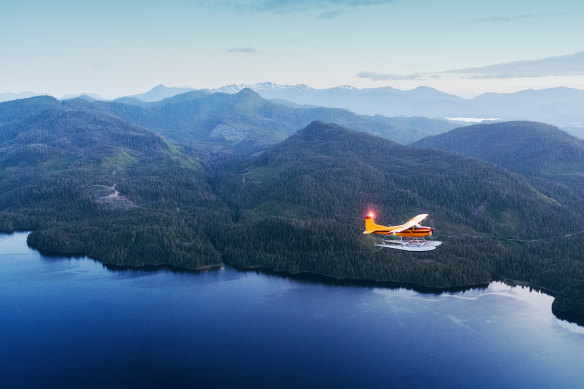
With few roads, bush planes are often the only way for Alaskan locals to leave remote communities.Credit: iStock
Alaska has few roads, and small aircraft (some of which are seaplanes) are often the only way for locals to escape their isolated communities. Brace yourself: most of the planes are old, runways are rugged, bad weather and turbulence frequent and motion sickness might well overcome you. Another indignity is being weighed – along with your luggage – before you board. Many bush planes service commuter routes, while others operate scenic flights for tourists. See travelalaska.com
Suspension monorail, Wuppertal, Germany
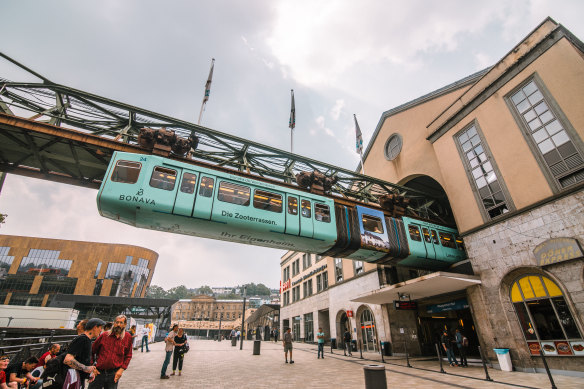
Wuppertal’s monorail is the world’s oldest remaining transport of its kind.Credit: iStock
While many of us might have used a regular monorail, especially at an airport, this version from 1901 looks distinctly odd – and surprisingly futuristic, since carriages hang beneath the rail, rather than ride above it. Wuppertal’s monorail is the world’s oldest remaining transport of its kind, still used by tens of thousands of commuters daily, although the introduction of new-generation carriages in 2019 killed off some of the romance. It runs 13 kilometres and has 20 stations. See schwebebahn.de
Maglev, Shanghai, China
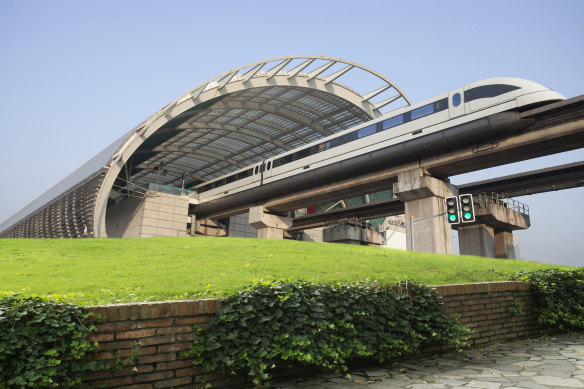
China’s high-speed magnetic levitation train, the Maglev.Credit: iStock
The Maglev that operates between Pudong International Airport and Pudong district is the world’s first (and still only) commercially operated, high-speed magnetic levitation train. It reached top speeds of 501 kilometres/hour in tests, and before mid-2021 operated at 431 kilometres/hour, although it now travels at a sedate 300 kilometres an hour. Because the train floats above the tracks, you won’t feel any vibrations, and hardly hear anything. New 600 kilometres/hour Maglevs are coming to other Chinese cities soon. See smtdc.com
Cocotaxis, Havana, Cuba
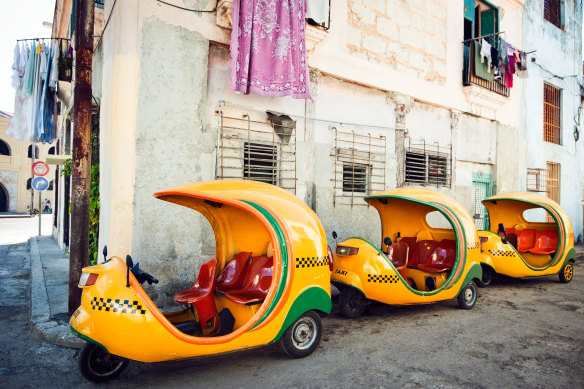
Cuba’s yellow Cocotaxis, designed to resemble a hollowed-out coconut.Credit: iStock
Nothing unusual about motorised rickshaws, such as the Thai version, the tuk-tuk. These made-in-Cuba incarnations, however, have a distinctive appearance. The bright-yellow fibreglass taxis supposedly resemble a hollowed-out coconut, though look more like giant motorbike helmets on wheels. Two passengers squeeze in directly behind the driver. The downside? They’re unstable and offer little protection in traffic accidents, which are frequent in Cuba. The Australian government’s Smartraveller says you should avoid them. See cuba.travel
Trishaws, Melaka, Malaysia
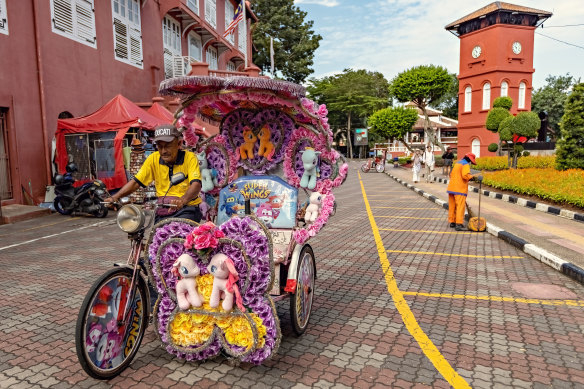
A pimped-out rickshaw in Melaka.Credit: iStock
Nothing exceptional about cycle rickshaws either, unless you’re in Melaka, where pimped-out versions – which have quite a following on Instagram – are brightly painted and decorated with an unabashed excess of sequins, feathers, plastic flowers, glowing hearts, fairy lights and cartoon characters. Music blasts from stereos. Pick your favourite theme – Hello Kitty, Pokemon – and clamber into your mobile nightclub for a spin around Melaka’s sights as techno or Bollywood music thumps. See malaysia.travel
E-sleds, Lapland, Finland
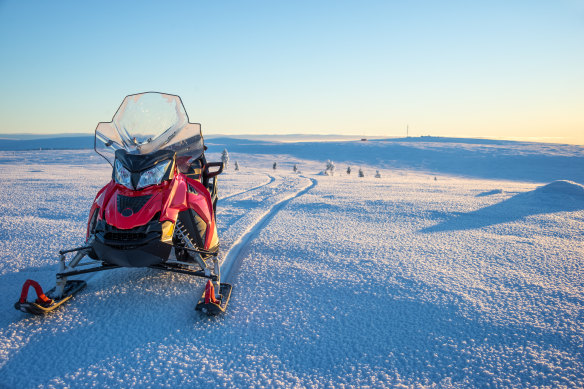
A snowmobile… the only way to sight-see in frozen Lapland.Credit: iStock
OK, not quite public transport: for the Finns, snowmobiles are utility vehicles and for tourists the only way to sight-see in frozen wilderness. A new generation of electric snowmobiles is making the experience more sustainable and a whole lot quieter: no likelihood of spooking the reindeer. You can use e-sleds for excursions to fish, see the northern lights, visit local communities, or get into snowy landscapes where roads are non-existent, or closed in winter. See lapland.fi
Escalators, Central, Hong Kong
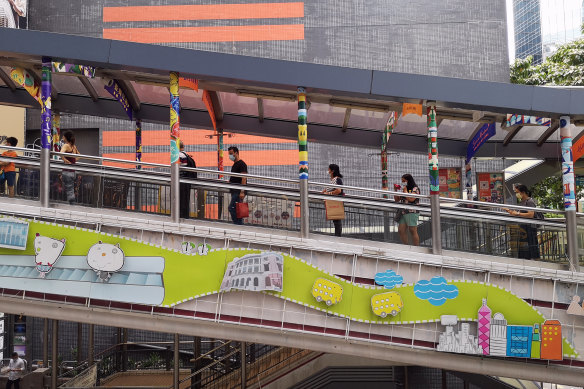
The longest outdoor covered escalator system in the world.Credit: iStock
The 18 escalators and three moving walkways that take thousands of commuters every day up and down between residential district Mid-Levels and business district Central create the world’s longest outdoor, covered escalator system (800 metres). The escalators run downwards until 10am, then upwards, and have 14 “stations”. The whole ride takes 20 minutes if you simply stand, though many Hongkongers speed up their journey by walking. See discoverhongkong.com
Sledges, Madeira, Portugal
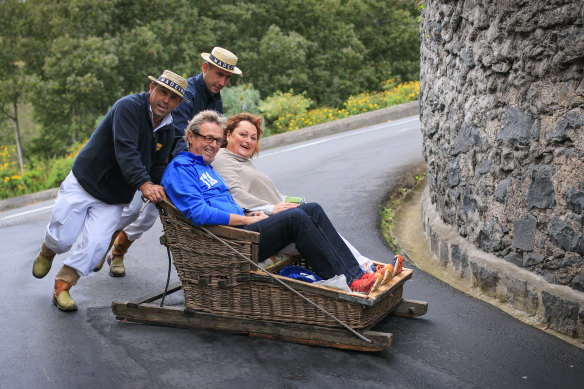
On the move in Madeira.Credit: iStock
For more than a century, locals on this Atlantic island have used wicker sledges to transport themselves and their goods from hilltop town Monte to Funchal, two kilometres below. These days, it’s daredevil tourists who take the ride. The sledges are steered by two men in white (known as toboggan runners) wearing straw boaters, and the only brakes are the men’s skill and rubber-soled shoes. The sledges hit speeds of almost 40 km/h. See carreirosdomonte.com
Jeepneys, Manila, Philippines
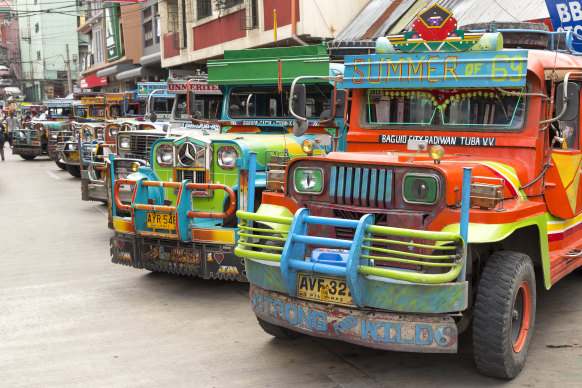
A Manila institution… multi-coloured Jeepneys seen lined up at a station.Credit: iStock
Jeepneys – officially called public utility vehicles – are a Manila institution. The shared buses, which seat 20 passengers and have open windows and a single entrance at the rear, originated in modified and repurposed military Jeeps after World War II. Luridly painted bodywork and windscreens draped with religious trinkets are eye-catching. Jeepneys ply set routes and allow passengers to hop off anywhere. A new wave of purpose-built Jeepneys are safer and eco-friendlier, but not as characterful. See tourismphilippines.com.au
DUKWs, Singapore
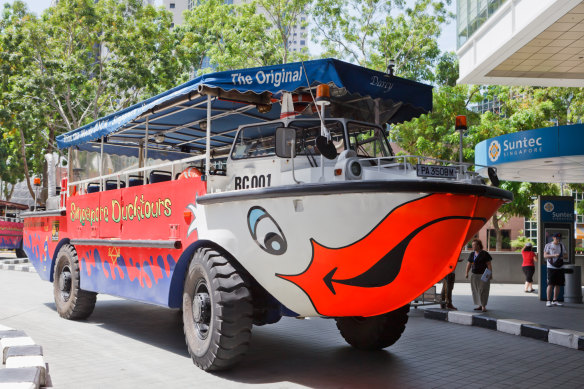
The Singapore version of the Duck Tour splashes into Marina Bay.Credit: iStock
During World War II, the American military was also responsible for the DUKW (pronounced “duck”), a six-wheel adaptation of a truck designed for amphibious use, especially during beach landings. Duck-tour companies now operate in cities from Boston to London. The Singapore version takes in city-centre sights and splashes into Marina Bay. It has an unblemished safety record for a vehicle notorious for blind spots, and little ability to cope with adverse conditions on the water. See ducktours.com.sg
Sign up for the Traveller newsletter
The latest travel news, tips and inspiration delivered to your inbox. Sign up now.